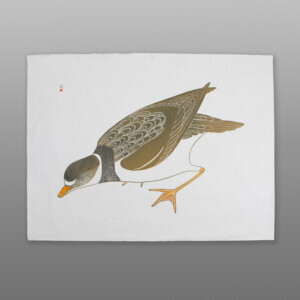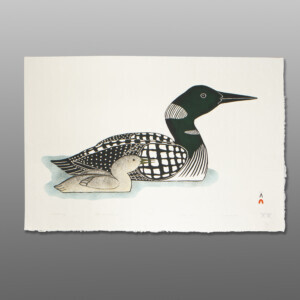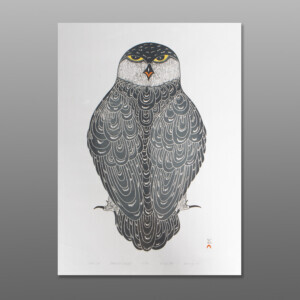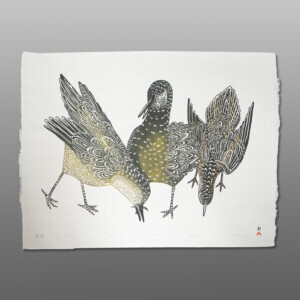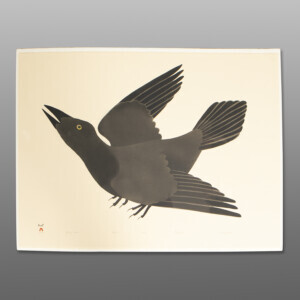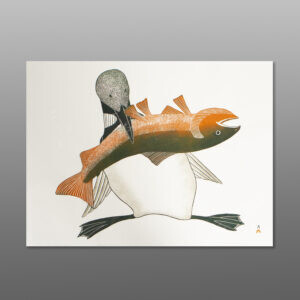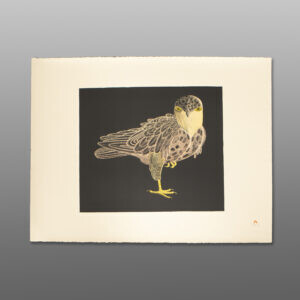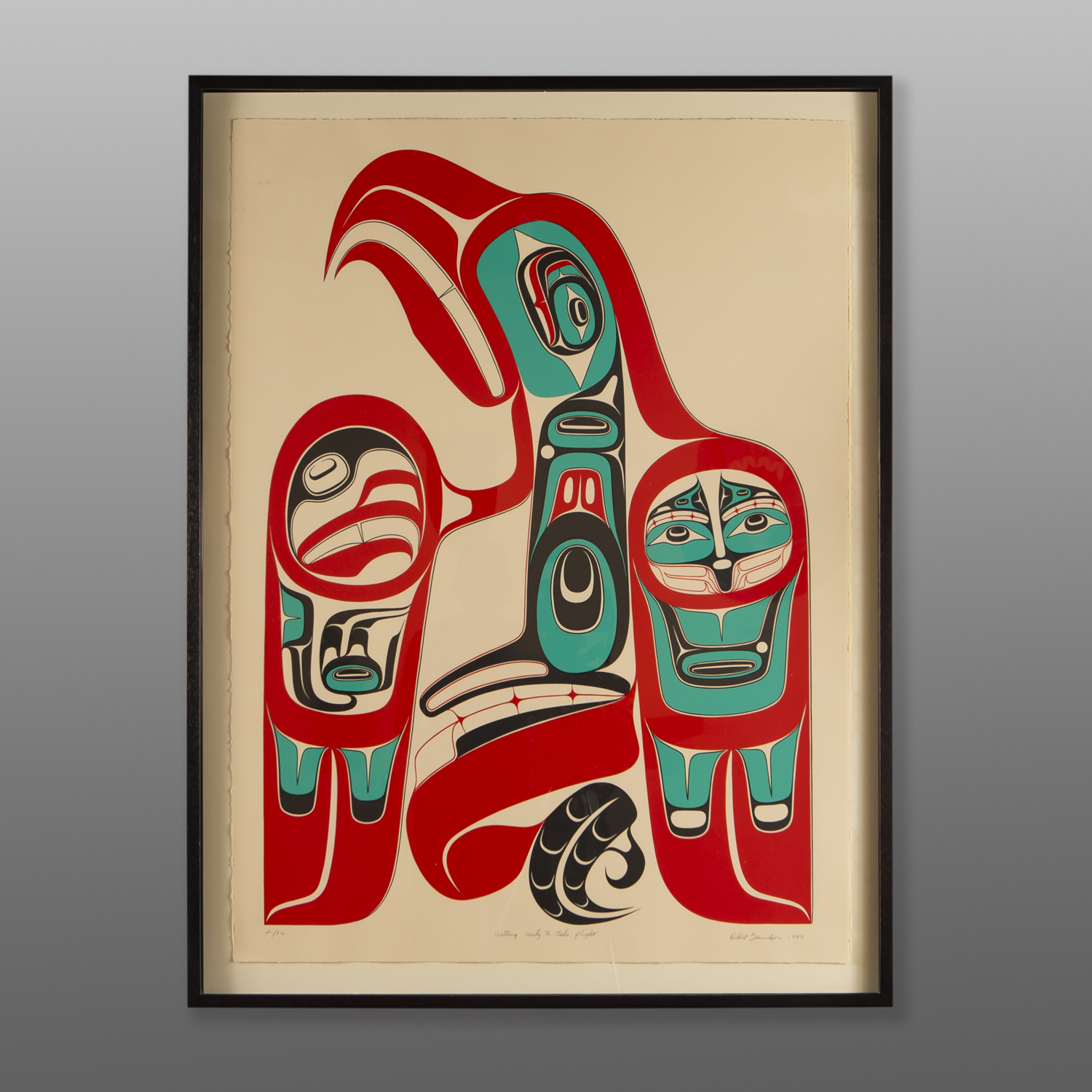
Getting Ready to Take Flight (1995)
Robert Davidson, RCA
Haida
Framed serigraph, #4/75
33" x 25"
Sold
Robert Davidson, RCA
Haida
Robert Davidson, RCA is a Haida artist who was born in 1946 in Hydaburg, Alaska. He currently lives and works in White Rock, near Vancouver, and Massett,Haida Gwaii.
His parents are Claude and Vivian Davidson. Through Claude, he is the grandson of the Haida artist and memoirist Florence Davidson. His great grandfather was the famed Haida artist, Charles Edenshaw (1839 - 1924) whose superb artworks were well known in the Haida community and also collected and displayed in showrooms internationally, during the era before Haida culture was painfully silenced by the government.
 Davidson's Haida name is G̲uud San Glans, which means "Eagle of the Dawn". His younger brother and former apprentice, Reg Davidson, is also a Haida carver.
Davidson's Haida name is G̲uud San Glans, which means "Eagle of the Dawn". His younger brother and former apprentice, Reg Davidson, is also a Haida carver.
Robert has been one of the most pivotal artists to introduce and reawaken Haida art for over fifty years. His creations are ones you begin to recognize, the more you see - for his incredible mastery of form lines. He has been referred to as the "Indigenous trailblazer, Robert Davidson" by CBC.
In infancy, Robert Davidson moved with his family to the Haida village of Masset, British Columbia, on Haida Gwaii. n 1966 he became apprenticed to the master Haida carver Bill Reid. In 1967, he began studies at the Vancouver School of Art, and three years later, he carved and raised the first totem pole on Haida Gwaii in ninety years (when he was 22 years old).
For more than fifty years now, Robert Davidson has worked as an artist and has produced an internationally acclaimed body of work. His work is found in a number of private and public collections including the National Gallery of Canada in Ottawa, the Vancouver Art Gallery, the Canadian Museum of History in Hull, Quebec, the Southwest Museum in Los Angeles.
Davidson’s passion to revive and perpetuate a variety of forms of Haida cultural expression, including song, dance and ceremony, has fueled his remarkable output throughout the years. His inspiration was to give his elders a chance to celebrate culture in a way they had not been able to in their lifetimes.

